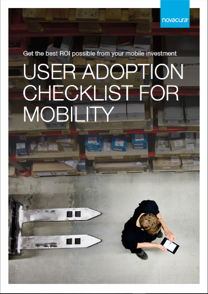
What is user adoption?
As the name suggests, user adoption is the process of getting users to adopt something: a new piece of software, a new way of working, etc.
Simple, right?
The problem is: humans are naturally resistant to change. If you just hand someone a tool and expect them to use it, with no explanation of how or why, they’re probably going to be a bit resistant. Successful user adoption isn’t just putting the tool in the user’s hand: it’s explaining to them why the tool is important, how the tool should be used, and what will happen if the tool isn’t used correctly.
So, user adoption relies on user buy-in. Users don’t care which app platform you choose: they care whether or not the app will work for them. Will it help them work faster and better? Will it reduce the time spent on boring, repetitive work? Will it make their lives easier in some way? If so, make this point clear. Show them the value of using the new tools.
User adoption for a mobile app
Let’s see what a user adoption strategy might look like in a business. We’re going to use the example of a company that performs maintenance on forestry equipment. They’ve decided that they want to take their work orders mobile, switching from a paper form to a mobile app. They’ve already chosen a tool that connects to their ERP, and are in the process of building the work order application. Now, they just need to convince their service technicians to start using the mobile app.
Improve now
See our entire collection of applications to streamline your operations and much more.
Here’s what their user adoption strategy might look like:
Make the service technicians aware of the problem.
In this case: paper work orders. Say, for example, some work orders have been lost or damaged before the information got into the system. This is a huge problem: until the information on the paper form is entered into the computer, there’s no backup. So if paper forms get lost or damaged, a lot of data goes missing. This means customers aren’t billed correctly, technicians don’t get paid for the right hours, and so on.
Build desire for a change.
You might present the app to technicians this way: “wouldn’t it be great if you didn’t have to keep track of paper forms? If you didn’t have to worry about papers getting lost or damaged? If you only had to enter work order info once (instead of twice, like you do now: once on paper then again in the computer?). That’s what this new mobile app will do.”
Show the technicians how the new app works.
Once the app is built and ready to go live, start user training. Give the technicians a live demonstration of the app, and let them test it out themselves before they start using it in the field. Make sure the app works for them: that it’s simplifying things instead of making them more complicated.
Encourage all service technicians to start using the mobile app in the field.
Ask them for any and all feedback on how the app works, any problems they have, what could be done better, etc. Keep track of how many technicians opt to keep using the paper forms.
Use positive reinforcement.
Reward technicians who use the app for 100% of their work orders, let people know how many work hours have been saved because of the app, and so on. Make the case that the app is a positive addition to the service technician’s toolbox: back up that assertion with data.
USER ADOPTION CHECKLIST FOR MOBILITY










